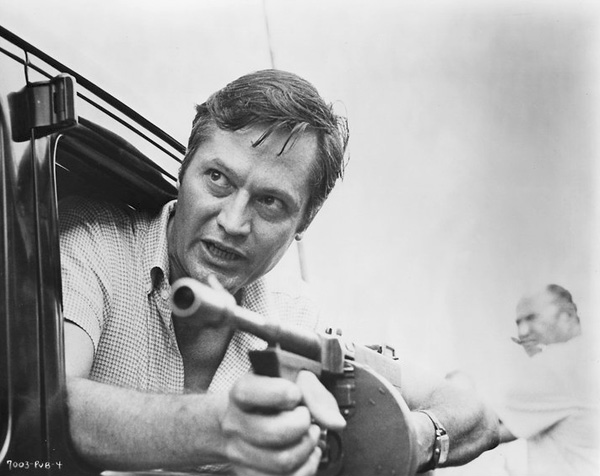
Roger Corman on the set of BLOODY MAMA, 1970 (Anchor Bay Films)
Roger Corman was an independent filmmaker before John Cassavetes ever picked up a camera. He belonged to that group of filmmakers from the 1950s who saw a window for B movies. He made stuff that wasn’t too bad and almost always turned a profit. (Corman wasn’t an Ed Wood, who was forgotten in his own time.) All told as of today, at the age of 85, he’s produced some 400 movies, directed 56, and has five movies in either post-production or filming. Some of these titles? Attack of the 50ft Cheerleader, Road Raiders, and Stealing Las Vegas.
This loving but not completely uncritical documentary features talking-head commentary from Corman, his brother Gene, and the countless actors, directors, and filmmakers who are basically his children. Without him, we wouldn’t have Francis Ford Coppola, Martin Scorsese, Ron Howard, Joe Dante, Peter Bogdanovich, or Pam Grier. Or, rather, they wouldn’t have come out quite the way they did. Scorsese, in particular, notes that Corman taught him the valuable lesson of shooting on schedule and being creative within restrictions.
The most memorable anecdote comes from Bogdanovich, who was asked to shoot for his directorial debut extra footage of girls on a beach (without ANY dialog) to intercut with footage of a men-in-space “epic.” Corman told him that the girls couldn’t speak in order to save on sound costs. When he turned in his mishmash and the producers couldn’t tell what was going on, Bogdanovich had to go back and dub in dialog as if the women were telepathic! After Ron Howard asked for more extras in his first film as a director, he was told by Corman that if he finished his first film, Grand Theft Auto, on time and on budget and on the producer’s terms, he’d never have to make another movie for him again.
What one comes away with is how much Corman really did care about the craft of making movies, despite (or because of) the brand of his films, and their number. When asked in the mid-’70s by his wife what he was doing, he said he had 12 films in production, but couldn’t remember anything about two of them. Yet because of how cheap they were to make, or how he could skimp on costs, they usually made money. Only when he risked his neck out to make something personal, like the anti-racism polemic The Intruder (a legitimately good film if memory serves), did he lose money, and his own money at that.
The closest we see to him coming to being an “artist” is in the ’60s, with his series of Edgar Allan Poe films (The Masque of the Red Death) and The Trip (written by Jack Nicholson), but by the 1980s, his output slowed down. He either couldn’t make films with bigger budgets, or just didn’t have it in him to waste any money. For all of his clever tricks, he became a victim of his own doing. Blockbusters like Jaws and Star Wars used the same kind of B-movie aesthetic on a much larger scale, and he couldn’t compete.
I might have liked to have seen more from that period, or rather, to learn more about what happened to him since he sold New World Pictures, his movie production and distribution company. But what remains is a sweet tribute to the man and to his legacy through all the filmmakers and actors who continue to respect and admire him, even with his penchant for crazy antics. (As one interviewee says, “He’ll put you in the water and say ‘swim,’ and you either learn to swim and don’t drown, or you drown and, well, that’s it.”) Deep down, naturally, Corman was a pure cinephile (New World Pictures specialized in distributing Bergman, Fellini, Kurosawa and Truffaut in the U.S.) and a one-of-a-kind mind who suggested to a director to watch David Lean films for shot composition and depth—for the blaxploitation movie Blast.
















Leave A Comment